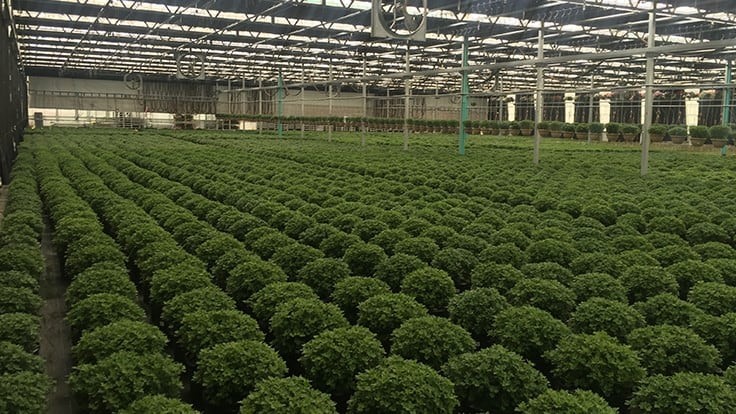This article was originally published in the September 2020 issue of Greenhouse Grower magazine.
3 things growers should know about heat stress
High temperatures in the greenhouse can lead to a host of other problems.

Paul Pilon, horticulture consultant and author of the book “Perennial Solutions: A Grower's Guide to Perennial Production,” says growers have several factors to examine when considering the effects of heat in the greenhouse. Broadly, he says, it causes stress.
"But heat can be vague," he says. "Are we talking a couple of hours above the optimal ranges or are we talking about a plant sitting in temperature extremes for days on end?"
1. Temperature affects multiple processes during the growing period.
According to Pilon, when a greenhouse is too warm, root development, photosynthesis and nutrient absorption can be negatively affected.
"There are many detrimental things than occur," he says. "It's not just going to affect one process — it's going to affect a lot of different things all at once."
Visual indicators include, but are not limited to, flagging (droopy leaves), cupped leaves, leaf abscission, leaf scald and reduced growth. High temperatures can also decrease flower number, flower size and the color intensity of the blooms, he says.
As temperatures increase above the optimal range of 60-75° F (depending on the crop), growers will first notice a plant's growth rate decrease, Pilon says. If the temperatures spikes above 86° F, they'll notice the growth rate slowing even further. And temperatures above 104° over as little as a five- to six-hour period will impair the physiological processes of most plants.
"Plants and their root systems can tolerate heat," he says, "but there's a limit."
2. High heat can leave plants susceptible to disease.
In a high heat environment, the danger is not that specific diseases are more common, Pilon says. In fact, many common plant diseases cannot survive extreme heat.
The danger is that heat — and stress on the plant caused by heat — present an opportunity for disease to take root. "If there's physical or physiological damage we can't see caused by heat, and then a disease enters and says, 'Hey, I'm going to take over,' that's where I see the concern," he says. He notes that bacterial diseases like Pseudomonas and some fungal pathogens are capable of withstanding and thriving in heat.
"The real underlying issue with diseases and high temperatures is the damaged root systems, damaged plant materials and overall plant stress leaves the door open for plant pathogens to infect the crops," Pilon says."
He adds that pests are similar to disease issues; they are great at finding and infesting stressed plants. Although diseases are more of an issue in the greenhouse following heat events, pests can also be problematic. "We know, for instance, that spider mites thrive at warm temperatures," he says.
3. The importance of paying attention
Most greenhouses, Pilon says, now have an environmental control system in place, which helps prevent heat issues.
"Besides operating the ventilation system using temperature settings, those that have environmental control systems are using them to measure light intensity so that when it hits a certain level, the shade curtains close," he says. "Most of heat stress and high total temperatures occur because of solar gain. So a shade system is key to monitoring that."
In a nursery, Pilon says it's less important to monitor heat because there is very little a grower can do to reduce the temperature.
"It's really hard to cool things down in an outdoor setting," he says. "And even those have limitations."
Overall, Pilon says the key to monitoring is simply doing it and understanding what the temperature levels mean. If the temperature in a greenhouse does spike, it's better to know right away and limit the damage versus letting it fester.
"I would encourage any grower to monitor their temperatures whether it's indoor or out," he says. "I'd even recommend reviewing it daily, if not multiple times during the day, if you have the ability to do it. That allows you to make quick reactions and get things on the right path."
